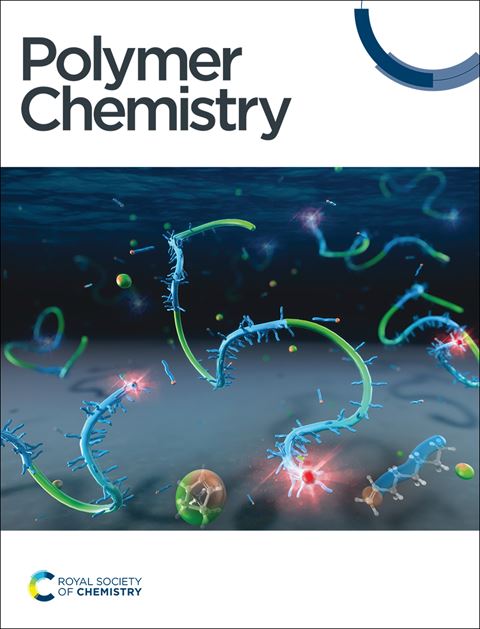了解氢化脱氯与Friedel-Crafts烷基化在PVC硅离子脱氯中的竞争
IF 3.9
2区 化学
Q2 POLYMER SCIENCE
引用次数: 0
摘要
氢化脱氯和使用硅离子的Friedel-Crafts烷基化相结合是一种快速的方法,可以使聚氯乙烯(PVC)完全脱氯,同时生产具有二次使用价值的有机和氯基产品。该反应在一定温度范围内的环境条件下完全脱氯。此外,介绍了四甲基二硅氧烷作为一种更便宜和更湿稳定的硅烷,其活性与三乙基硅烷相似。虽然分子硅化学的Friedel-Crafts烷基化已经实现了高选择性,但用PVC作为底物的类似尝试表明,芳烃的最大掺入量低于30%。然而,反应条件和芳烃溶剂的选择对聚乙烯-共聚乙烯烃聚合物产物的热性能有较大的影响。这些热性能的差异与二级Friedel-Crafts烷基化的可变副反应相一致,要么在分子内形成多独立重复单元,要么在分子间形成交联。本文章由计算机程序翻译,如有差异,请以英文原文为准。

Understanding the competition between hydrodechlorination and Friedel–Crafts alkylation in PVC dechlorination with silylium ions†
The combination of hydrodechlorination and Friedel–Crafts alkylation using silylium ions is a rapid route to fully dechlorinate poly(vinyl chloride) (PVC), while producing organic and chlorine-based products that have value for a second life. This silylium reaction has been optimized for full dechlorination under ambient conditions for a range of temperatures. Additionally, tetramethyldisiloxane is introduced as a cheaper and more moisture-stable silane, which shows similar activity as triethylsilane. While high selectivity for Friedel–Crafts alkylation has been achieved for molecular silylium chemistry, analogous attempts with PVC as a substrate have revealed a maximum arene incorporation below 30%. However, reaction conditions and choice of aromatic solvent show dramatic changes in thermal properties of the polyethylene-co-poly(vinyl arene) polymer product. These differences in thermal properties align with a variable side reaction of secondary Friedel–Crafts alkylation, either intramolecularly to form polyindene repeating units or intermolecularly to form crosslinks.
求助全文
通过发布文献求助,成功后即可免费获取论文全文。
去求助
来源期刊

Polymer Chemistry
POLYMER SCIENCE-
CiteScore
8.60
自引率
8.70%
发文量
535
审稿时长
1.7 months
期刊介绍:
Polymer Chemistry welcomes submissions in all areas of polymer science that have a strong focus on macromolecular chemistry. Manuscripts may cover a broad range of fields, yet no direct application focus is required.
 求助内容:
求助内容: 应助结果提醒方式:
应助结果提醒方式:


